What are the four main types of aquatic ecosystems include?
Are you curious about the different types of aquatic environments? Understanding these ecosystems is key to appreciating the diversity of life on our planet and how we can work with nature.
The four main types of aquatic ecosystems are marine, freshwater, wetland, and estuary environments. Each has unique characteristics and supports different forms of life, influencing everything from global climate to local industries like aquaculture.
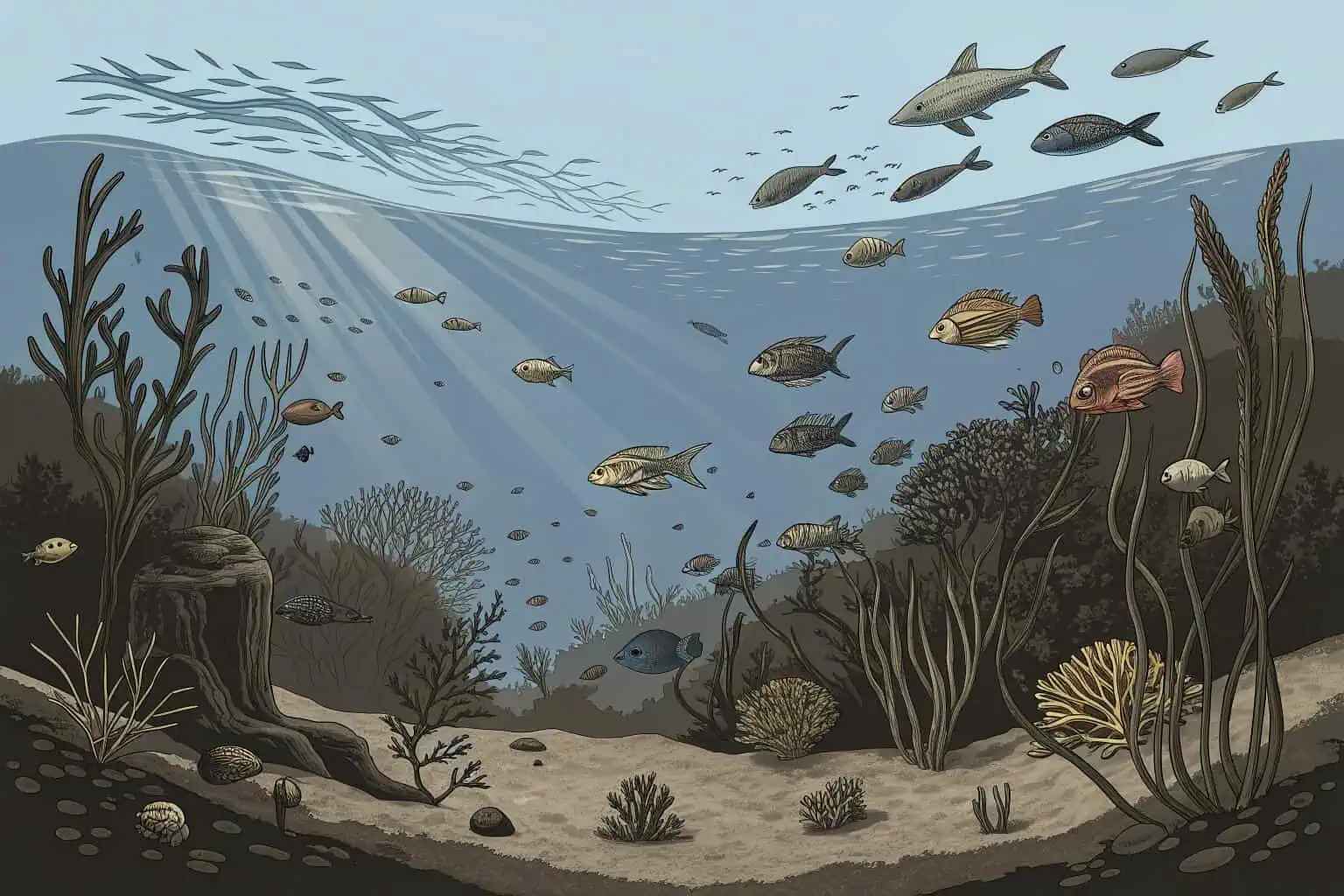
These natural systems offer valuable lessons for sustainable practices. By exploring them, we can discover how to better manage our water resources and create innovative solutions for a growing world. Let's dive deeper into what makes each of these ecosystems unique.
What are the four aquatic ecosystems?
Ever wondered what distinguishes the vast oceans from a quiet pond? The differences are immense, shaping the life within them and the role they play in our world.
The four aquatic ecosystems are marine, freshwater, wetland, and estuary. Marine ecosystems include oceans and seas, while freshwater covers rivers, lakes, and ponds. Wetlands are saturated lands, and estuaries are where rivers meet the sea.
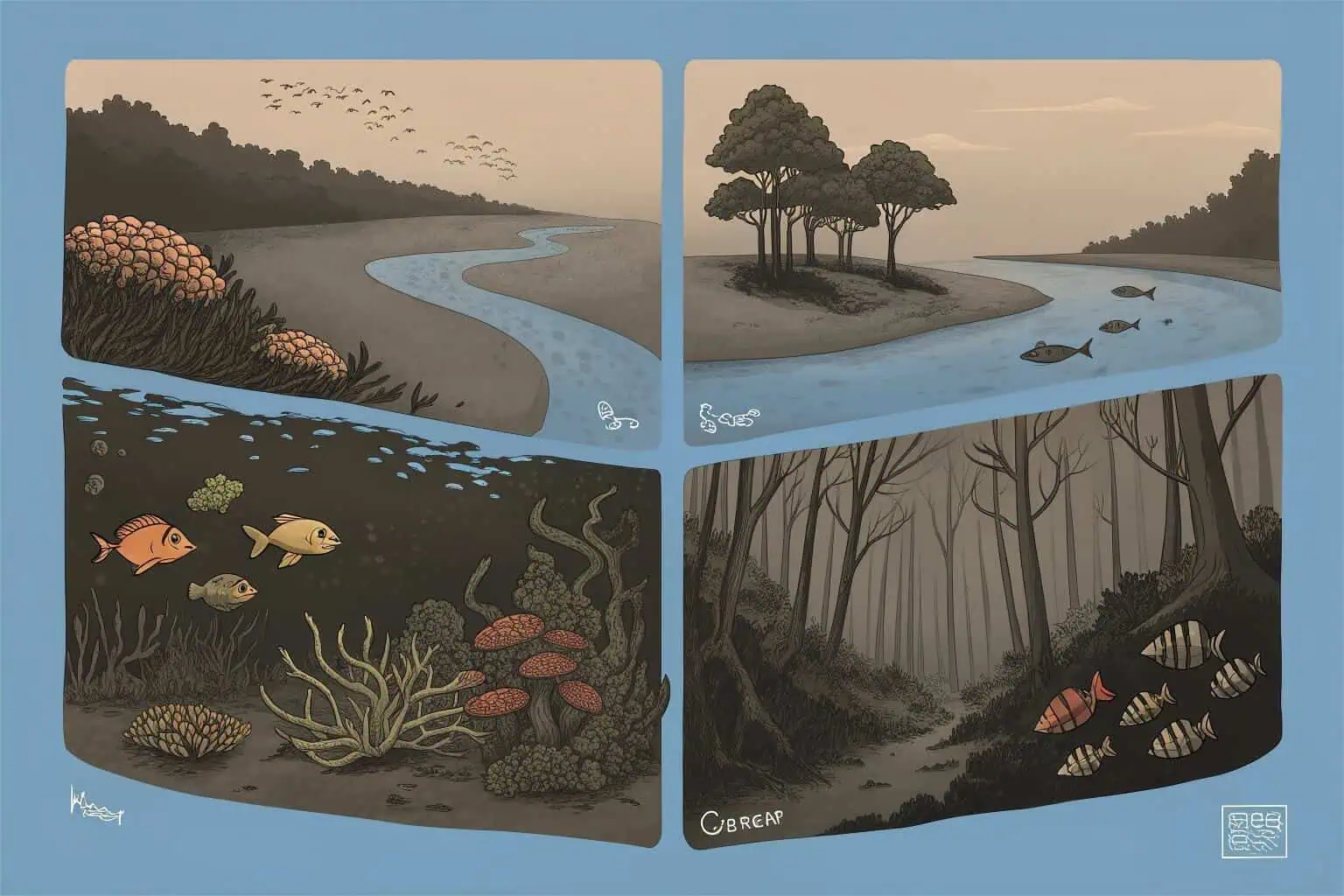
Understanding these ecosystems is not just an academic exercise. As someone deeply involved in the liquid management industry, I've seen how these natural models inspire our work. For instance, the principles of a balanced freshwater ecosystem guide us in designing effective fish farming solutions1. We mimic nature's efficiency to create sustainable, man-made environments. This approach helps us develop products like our durable, customizable fish tanks that support healthy aquatic life while meeting the practical needs of our clients.
Marine Ecosystems
Marine ecosystems2 are the largest on Earth, covering more than 70% of the planet's surface. They are characterized by their high salt content and are home to a vast array of life, from microscopic plankton to the largest whales. The sheer scale of marine environments means they play a crucial role in regulating global climate and providing resources for millions of people.
Freshwater Ecosystems
Freshwater ecosystems, such as rivers, lakes, and ponds, are vital for human survival. They provide drinking water, support agriculture, and are hotspots of biodiversity. In my work, I often draw inspiration from the nutrient cycles3 in these systems. A well-designed fish pond, for example, must replicate the natural balance of a freshwater lake to ensure the health and growth of the fish.
Wetland Ecosystems
Wetlands are unique areas where the land is saturated with water, either permanently or seasonally. They act as natural filters, purifying water and protecting against floods. Marshes, swamps, and bogs are all types of wetlands. Their ability to manage water flow and quality is something we strive to replicate in our liquid management solutions4, creating products that are both efficient and environmentally friendly.
Estuary Ecosystems
Estuaries are dynamic environments where freshwater from rivers mixes with saltwater from the ocean. This mixing creates a unique habitat that is highly productive and supports a diverse range of species. The constant change in salinity and water flow in estuaries reminds me of the need for adaptable and resilient solutions5 in our industry. Our products are designed to withstand varying conditions, ensuring reliability for our customers.
What are the main types of the aquatic ecosystem?
Have you ever considered how different bodies of water support such a wide variety of life? The classification of aquatic ecosystems helps us understand this diversity and its importance.
The main types of aquatic ecosystems are broadly divided into two categories: marine and freshwater. Within these, we find further distinctions, such as oceans, coral reefs, rivers, lakes, wetlands, and estuaries, each with its own unique ecological characteristics.
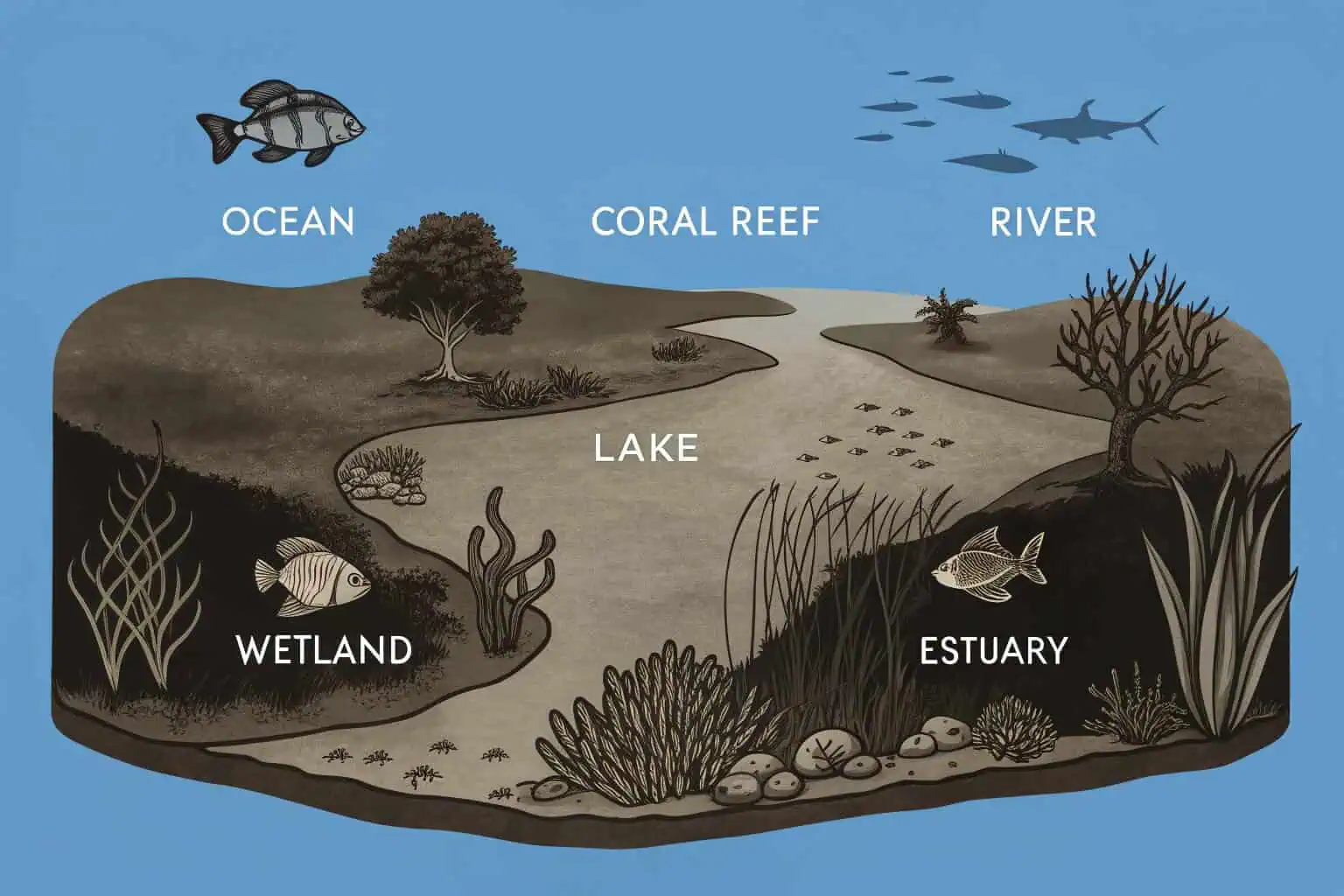
From my perspective in the aquaculture industry, these distinctions are critical. We don't just see bodies of water; we see models for sustainable practice. For example, the way a natural lake maintains its chemical balance informs how we design our large-scale fish tanks. We use durable, non-reactive materials to ensure the water quality6 remains stable, just as it would in a pristine natural environment. This attention to detail, inspired by nature, is what allows us to provide reliable and effective solutions for our clients, whether they are in Southeast Asia or the Americas.
The Two Broad Categories
Aquatic ecosystems are primarily divided into two major groups: marine and freshwater. This fundamental distinction is based on salinity, or salt content, which is the single most important factor determining the types of organisms that can survive in the water. Marine ecosystems, like oceans and seas, have high salinity, while freshwater ecosystems7, such as rivers and lakes, have very low salinity. This initial split helps us understand the basic requirements for life in these different environments.
Distinctions Within Categories
Within these two broad categories, we find a rich diversity of more specific ecosystem types. For example, marine ecosystems8 include not only the open ocean but also vibrant coral reefs and coastal kelp forests, each with its own unique community of life. Similarly, freshwater ecosystems9 can be flowing, like rivers and streams, or still, like ponds and lakes. Then there are the transitional zones, like wetlands and estuaries, which have characteristics of both and are incredibly important for biodiversity. Recognizing these distinctions is key to developing specialized solutions for each environment.
| Ecosystem Type | Key Characteristics | Relevance to Aquaculture |
|---|---|---|
| Marine | High salinity, vast size, stable temperature | Inspiration for large-scale, open-water farming systems |
| Freshwater | Low salinity, varied flow rates, crucial for drinking water | Direct model for pond and tank design, focus on nutrient cycling |
| Wetland | Water-saturated land, natural filtration, flood control | Lessons in water purification and bio-filtration systems |
| Estuary10 | Mix of fresh and saltwater, high productivity, dynamic | Insights into creating adaptable systems for fluctuating conditions |
What are the 4 types of ecosystems?
Thinking beyond just water, what are the fundamental types of ecosystems that make up our world? Understanding this broader context helps us see how everything is connected.
The four main types of ecosystems are terrestrial, aquatic, forest, and desert. Each is defined by its dominant environment and the types of life it supports, creating a complex web of interactions across the globe.
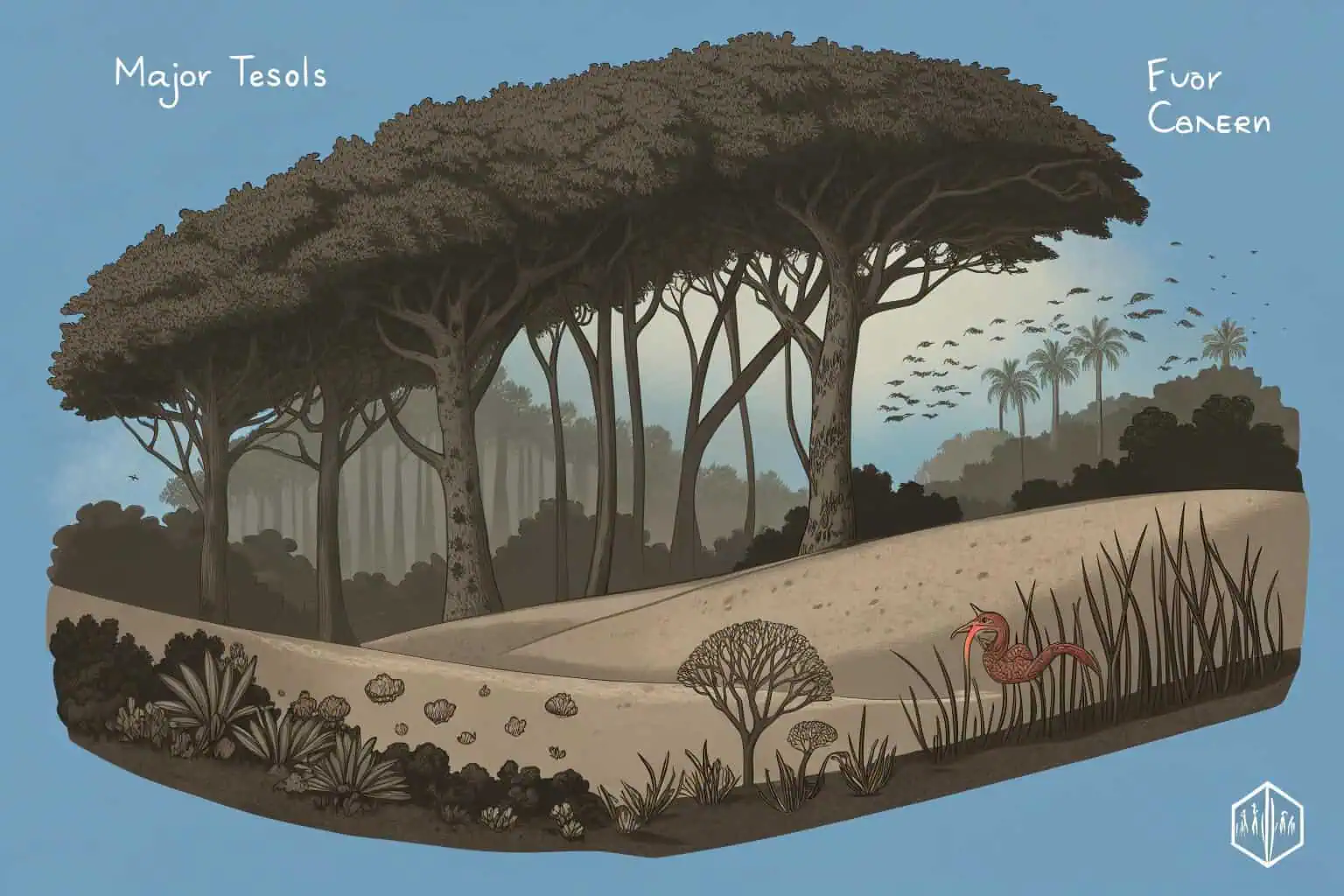
In my experience, the principles that govern these ecosystems are universal. Whether it's a forest or an ocean, the concepts of balance, resilience, and adaptation are key. In the liquid management sector, we apply these ideas daily. When we design a collapsible fish tank, we're not just creating a container; we're building a micro-ecosystem11. The materials we choose, like galvanized steel12 for support, are selected for their durability and ability to create a stable environment, much like the bedrock of a natural habitat. This approach ensures our products are not only functional but also in harmony with the ecological principles that sustain life.
Beyond the Water
While my focus is on aquatic systems, it's important to recognize the other major types of ecosystems. Terrestrial ecosystems are land-based, and this broad category is often broken down further into forest, grassland, and desert ecosystems. Each of these is defined by its climate, soil, and the dominant types of plant and animal life. A forest is characterized by its dense tree cover, a grassland by its grasses and herbaceous plants, and a desert by its lack of rainfall.
An Interconnected Web
No ecosystem exists in isolation. They are all interconnected, and the health of one can impact the others. For example, a river (a freshwater aquatic ecosystem) flows through a forest (a terrestrial ecosystem), carrying nutrients and life with it. The forest, in turn, helps to filter the water and prevent erosion, keeping the river healthy. This is why a holistic approach13 is so important. When we provide a water storage solution14 for a farm, we are not just supporting that farm; we are also impacting the surrounding ecosystem. Our goal is to do so in a way that is sustainable and beneficial for all.
| Ecosystem A | Connection | Ecosystem B | Impact of Connection |
|---|---|---|---|
| Forest | River Flow | Aquatic (River) | Forest filters water for the river; river provides water for the forest. |
| Aquatic (Ocean) | Evaporation & Rain | Terrestrial (Coastal) | Ocean moisture creates rain for coastal ecosystems. |
| Grassland15 | Animal Migration | Forest | Animals move between ecosystems, dispersing seeds and nutrients. |
| Human (Urban) | Runoff | Aquatic (River/Lake) | Urban pollution can harm aquatic life; managed systems can create habitats. |
What are the four main factors that affect aquatic ecosystems?
What are the key forces that shape life in water? If you're involved in aquaculture or any water-related industry, understanding these factors is essential for success.
The four main factors affecting aquatic ecosystems are temperature, water quality, light availability, and human activities. These elements determine the health, productivity, and balance of any aquatic environment, from a small pond to the vast ocean.
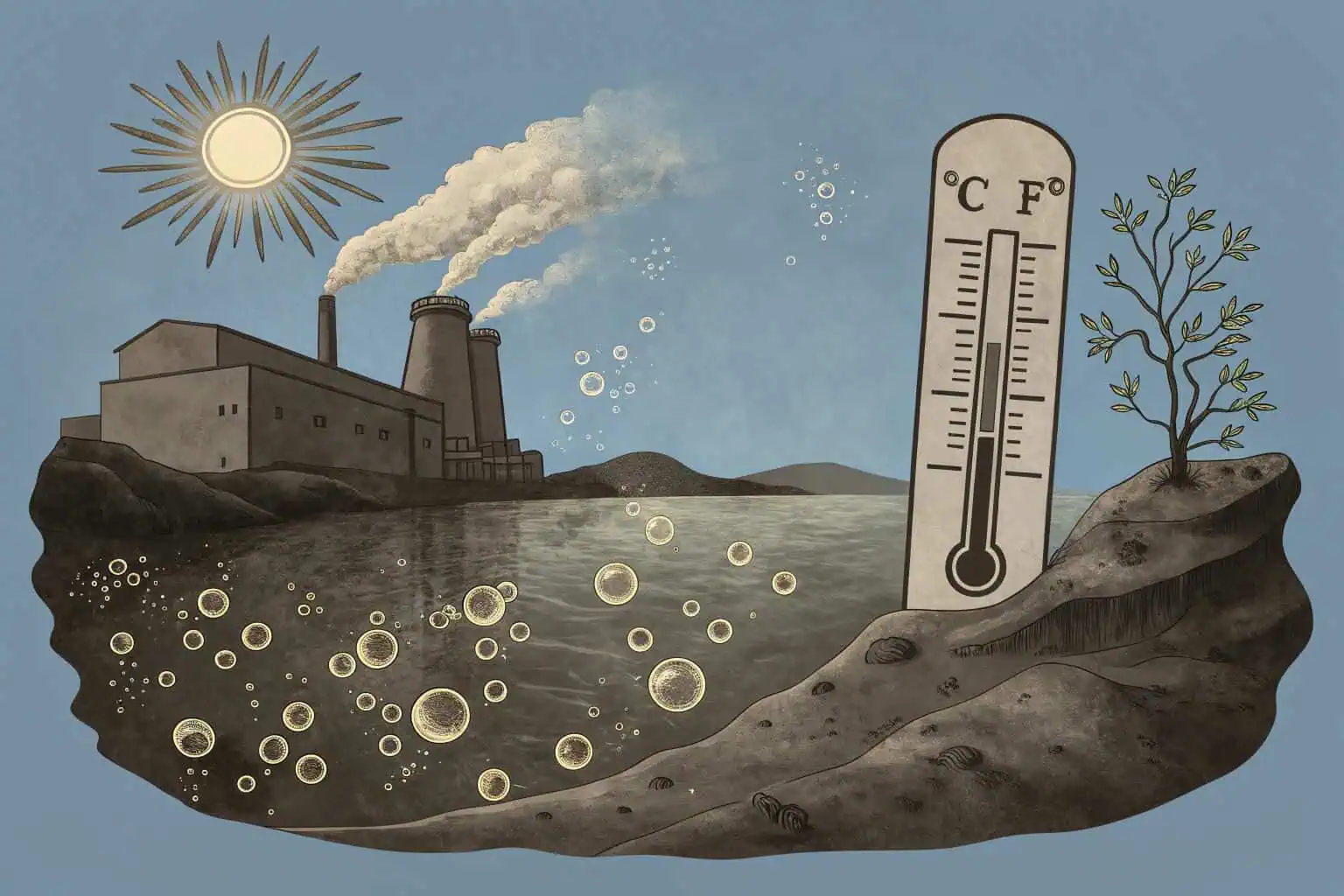
I've seen firsthand how these factors can make or break an aquaculture project. A slight change in temperature or water pH can have a huge impact on fish health. That's why we've invested in innovations like our double-welded seams for our liquid storage products16. This technology ensures a perfect seal, preventing leaks and contamination that could disrupt the delicate balance of the aquatic environment we're trying to create. It's about controlling these crucial factors to provide a stable and predictable system for our clients, which is essential for their success and for the sustainable growth of the industry.
Temperature
Temperature affects the metabolic rates17 of aquatic organisms and the amount of dissolved oxygen in the water. Different species have specific temperature ranges they can tolerate, making this a critical factor for aquaculture.
Water Quality
Water quality includes parameters like pH, nutrient levels, and the presence of pollutants. Poor water quality18 can lead to disease and stress in aquatic life. Our durable, non-reactive materials are chosen to prevent any negative impact on water quality.
Light Availability
Light is essential for photosynthesis, which forms the base of most aquatic food webs19. The amount of light that penetrates the water affects the types of plants and algae that can grow, influencing the entire ecosystem.
Human Activities
Human activities, such as pollution, overfishing, and habitat destruction, are major threats to aquatic ecosystems. As an industry, we have a responsibility to minimize our impact. By creating durable, long-lasting products, we help reduce waste and promote sustainable practices20. Our commitment to quality, backed by ISO standards, is part of our effort to be a positive force in the industry.
Conclusion
In short, understanding the four main aquatic ecosystems and the factors that influence them is crucial for sustainable aquaculture and responsible water management in our world.
-
This resource will provide insights into innovative fish farming techniques that promote sustainability and efficiency. ↩
-
Exploring this link will provide you with in-depth insights into the importance and characteristics of marine ecosystems. ↩
-
Understanding nutrient cycles is crucial for maintaining healthy freshwater ecosystems and optimizing fish pond designs. ↩
-
This resource will showcase cutting-edge technologies and practices in liquid management, crucial for environmental sustainability. ↩
-
Exploring adaptable and resilient solutions can inspire innovative approaches in product development, ensuring long-term success. ↩
-
This link will offer valuable techniques and tips for ensuring optimal water quality in your fish tanks. ↩
-
This resource will help you understand the unique features and biodiversity of freshwater ecosystems. ↩
-
Exploring marine ecosystems will deepen your understanding of biodiversity and inspire innovative aquaculture solutions. ↩
-
Learning about freshwater ecosystems can provide valuable insights for sustainable aquaculture practices and water management. ↩
-
Exploring this resource will deepen your understanding of estuaries' vital role in biodiversity and aquaculture. ↩
-
Understanding micro-ecosystems can enhance your design approach, ensuring ecological balance and sustainability in your projects. ↩
-
Exploring the benefits of galvanized steel can inform your material choices, promoting durability and environmental harmony in your designs. ↩
-
Understanding a holistic approach can enhance your knowledge of ecosystem interconnections and sustainable practices. ↩
-
Exploring effective water storage solutions can help improve farm sustainability and ecosystem health. ↩
-
Explore this link to understand how grasslands support biodiversity and their vital role in ecosystem health. ↩
-
Discover the latest innovations in liquid storage products that can enhance the efficiency and safety of aquaculture operations. ↩
-
Understanding metabolic rates is crucial for optimizing aquaculture practices and ensuring the health of aquatic species. ↩
-
Understanding water quality is crucial for maintaining healthy ecosystems and ensuring safe water for all. ↩
-
Exploring aquatic food webs reveals the intricate relationships between organisms and their environment, essential for ecological studies. ↩
-
Exploring sustainable practices can inspire businesses to adopt eco-friendly methods and reduce their environmental impact. ↩